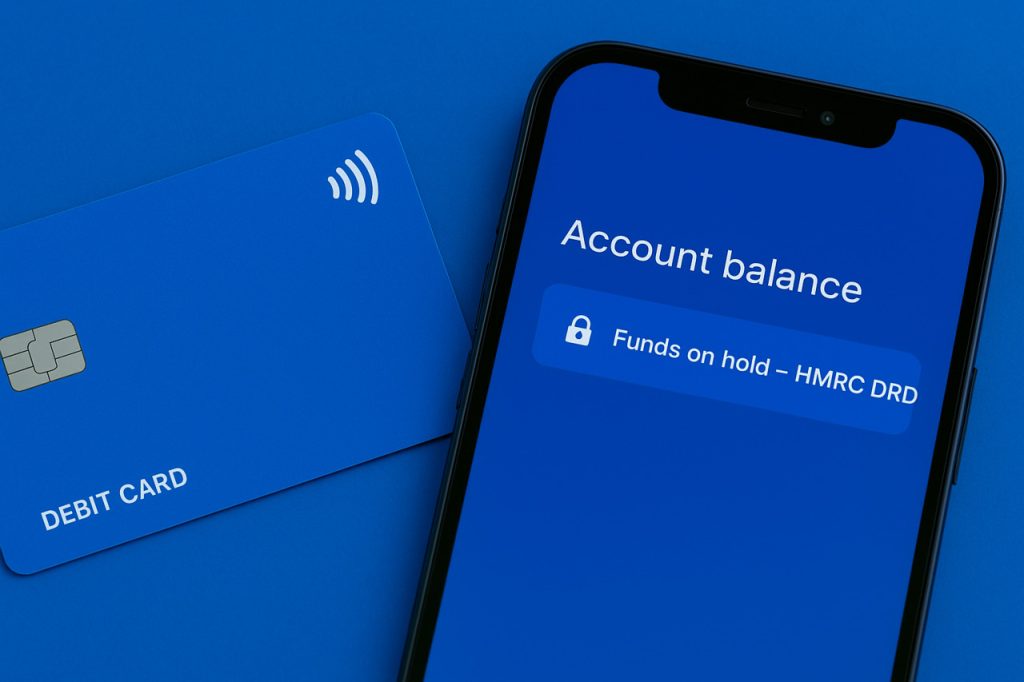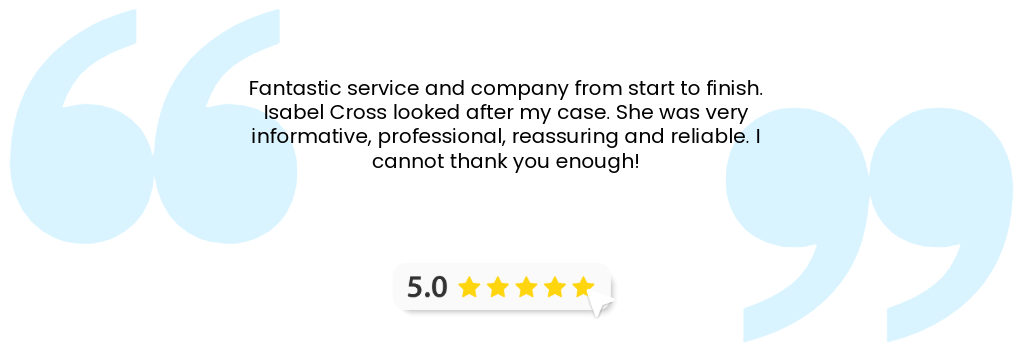Direct Recovery of Debts (DRD) allows HM Revenue & Customs (HMRC) to take money directly from bank or building society accounts to settle unpaid tax and tax credit debts. It’s a statutory process with safeguards and doesn’t require a court order.
Getting a letter that mentions Direct Recovery of Debts can be frightening. It feels sudden and final. It isn’t. You still have options, and you still have time to act.
This guide explains DRD in plain English. You’ll see when HMRC can use it, what protections apply, and practical steps you can take today. If you act early, you can usually avoid money being taken from your account.

What Is Direct Recovery of Debts?
Direct Recovery of Debts, often shortened to DRD, is a statutory power that allows HMRC to take unpaid tax directly from bank and building society accounts. It can apply to personal and business accounts. It can also include cash ISAs in some circumstances, where accounts are in credit and you have the means to pay. See HMRC’s Issue Briefing: Direct Recovery of Debts for the official overview and safeguards, including the current “test and learn” restart phase.
DRD was introduced by the Finance Act 2015 (termed “enforcement by deduction from accounts”). HMRC instructs banks and building societies to transfer funds once legal conditions are met and the taxpayer has been notified.
DRD is different from enforcement agents visiting your premises to take control of goods. It targets funds held with your bank. That’s why speed matters: the earlier you respond, the more control you keep.
Who Can Be Targeted Under DRD?
Debts that can be targeted under DRD include income tax, VAT, corporation tax, tax credit overpayments, and other established HMRC tax liabilities. HMRC typically considers DRD where:
- The tax debt is established and due.
- You’ve not engaged with reasonable attempts to collect it.
- There is enough money in your accounts to cover some or all of the debt.
- After any deduction, at least £5,000 must be left across your accounts.
- The debt is at least £1,000.
These thresholds and safeguards reflect long-standing policy design and reviews. For background on the £1,000 debt threshold and the requirement to leave a minimum £5,000 across accounts, see HMRC’s review of the intervention.
HMRC has confirmed it has restarted DRD in a measured “test and learn” phase, following the Spring Statement 2025.


The DRD Process: Step by Step
- Contact and engagement
HMRC will try to contact you. If you respond, pay, or agree affordable terms, DRD stops. Time to Pay remains an option if the debt is affordable over time. - Face-to-face visit
Before using DRD, HMRC policy indicates a face-to-face visit to confirm identity, discuss circumstances, and check for vulnerability. Where hardship is identified, DRD should not proceed. - Hold Notice to your bank
If HMRC proceeds, it can issue a Hold Notice to your bank or building society. This freezes the amount specified while you are notified. You will also receive a formal notice explaining the debt, accounts affected, and how to object. - 30-day objection window
You have at least 30 days to object, show evidence, or settle by agreement. If the issue is resolved, the hold is lifted. If not, HMRC may issue a Deduction Notice to transfer funds to settle some or all of the debt.
If you object, HMRC must review before money is taken. The freeze remains during the review.

Safeguards and Your Rights
- Minimum balance preserved. HMRC must leave at least £5,000 across your accounts after any deduction.
- Objection rights. You can object within the stated window if the amount is wrong, you’re vulnerable, or deduction would cause hardship.
- Time to Pay compatibility. If you agree a realistic Time to Pay plan, DRD should not be needed.
- Evidence matters. Bank statements, cash-flow forecasts, and proof of essential outgoings can support your objection.
- Appeal routes. Where appropriate, you may be able to challenge decisions in court.
Get support by contacting Anderson Brookes online or calling 0800 1804 935.
Sectors We Support
We support company directors in every sector, from construction firms and logistics companies to pubs, cafés, restaurants, hotels, retailers and manufacturers. Our advice is always clear, confidential and shaped by real experience in your industry. Whether you’re dealing with unpaid tax, supplier pressure or falling income, our team understands the challenges and will guide you through the best next steps.
How Common Is Direct Recovery of Debts?
Historically, DRD has been used sparingly. ICAEW reports only 19 deductions totalling £361,678 between April 2016 and December 2018, before the pandemic pause. HMRC has now restarted DRD in a limited way to improve collection where there is clear ability to pay and persistent non-engagement.
Context helps. HMRC’s 2024–25 Annual Report shows a tax debt balance around £44.0 billion at year-end and £48.0 billion in compliance yield for the year. The government has invested to improve debt recovery and reduce the overall burden on compliant taxpayers.
What to Do If You Receive a DRD Letter
- Don’t ignore it. Open the letter. Note the dates and any deadlines.
- Check the figures. Make sure the debt is correct. If something is missing or under appeal, gather evidence.
- Protect essential outgoings. Prepare a short cash-flow. List payroll, rent, VAT, PAYE, supplier essentials.
- Engage quickly. Call HMRC to discuss affordable terms and ask for Time to Pay.
- Get regulated help. Speaking to a licensed insolvency practitioner early can prevent escalation.
If you’re already struggling and can’t pay a tax bill, take advice now. If agents have warned of an HMRC enforcement visit, plan ahead so you can show a realistic proposal. For wider strategy, it’s worth reading a plain-English overview of HMRC debt management and how options like Time to Pay or formal procedures might fit your situation. If VAT arrears are part of the picture and you can’t pay VAT, act quickly to avoid penalties and default surcharges.

Protecting Your Company
Warning signs include persistent arrears, creditor pressure, and missed taxes. If your limited company cannot realistically catch up, you have options. We’ll assess viability and negotiate with HMRC where possible. If the company is insolvent and needs to stop trading, we give clear guidance on company liquidation and when to consider a CVL.
If closure is the right route, we’ll help you close a limited company with HMRC debts in a controlled way. If you’ve tried a voluntary strike-off without addressing HMRC arrears, remember that HMRC can object to strike-off where debts remain.
How to Prevent DRD
- Pay on time: Use reminders and your HMRC online account.
- Set up a Time to Pay plan: If you can’t pay in full, agree realistic instalments and keep to them.
- Communicate early: Respond to HMRC letters quickly; engagement reduces escalation risk.
Evidence that Helps
Having these ready when you speak to HMRC or to us can strengthen your position:
- Recent bank statements for all accounts.
- A 13-week cash-flow forecast.
- A short list of essential costs you must meet.
- Any recent correspondence with HMRC, including previous Time to Pay agreements.
If you’re vulnerable, brief notes or third-party evidence that explains your situation.
Alternatives HMRC May Use Instead of DRD
- Time to Pay arrangements (instalments).
- Debt collection agencies (contact pressure, no direct powers).
- County Court action (may lead to bailiffs/charging orders).
- Deductions from earnings/benefits (automatic, ongoing).
Your Options with Anderson Brookes
The licensed insolvency practitioners here at Anderson Brookes are here to help when your company faces financial difficulties. We give straight answers and act quickly.
We can provide you with personal advice on your situation, and help you to find the best route to stop pressure from HMRC.
Contact us today for a free consultation. There’s no obligation. If formal steps are needed, we’ll explain them clearly and handle the process.
Get Support Now
FAQs
Can HMRC take money without warning?
There should be contact attempts first. DRD includes a Hold Notice to your bank and a written notification to you. You then have at least 30 days to object, resolve errors, or agree terms.
Will HMRC check for vulnerability or hardship?
Yes. HMRC policy includes a face-to-face visit and an assessment of circumstances before using DRD. If vulnerability is identified, DRD should not proceed.
Does DRD apply to business and joint accounts?
DRD can apply to both business and personal accounts where you’re the debtor and funds are in credit. Joint accounts may be considered where you’re named and the debt is yours, though evidence of beneficial ownership can matter. If your situation involves shared funds, get advice immediately.
Will DRD drain funds needed for wages and bills?
Safeguards are designed to leave at least £5,000 across your accounts. If a deduction would cause hardship, object promptly with evidence and propose realistic terms.
What if I already have a Time to Pay plan?
Keep to it. If you can’t, contact HMRC before you miss a payment. DRD is generally aimed at non-engagement, so early communication protects you.
Will a CVL stop DRD against a company?
Once a company enters a formal insolvency procedure, creditor enforcement is normally stayed. Timing and correct steps matter, so seek advice before funds are frozen.
Does DRD affect ISAs?
Cash ISAs can be within scope where the account is in credit and the policy conditions are met.
